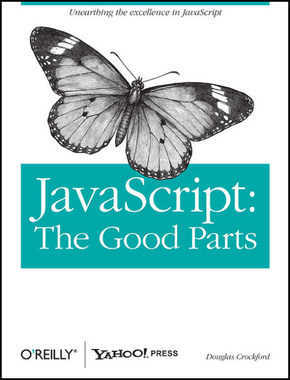
JavaScript: The Good Parts
| Verlag | O'Reilly Media |
| Auflage | 2008 |
| Seiten | 153 |
| Format | 23,3 cm |
| Gewicht | 292 g |
| Artikeltyp | Englisches Buch |
| ISBN-10 | 0596517742 |
| EAN | 9780596517748 |
| Bestell-Nr | 59651774EA |
Most programming languages contain good and bad parts, but JavaScript has more than its share of the bad, having been developed and released in a hurry before it could be refined. This authoritative book scrapes away these bad features to reveal a subset of JavaScript that's more reliable, readable, and maintainable than the language as a whole - a subset you can use to create truly extensible and efficient code.
Considered the JavaScript expert by many people in the development community, author Douglas Crockford identifies the abundance of good ideas that make JavaScript an outstanding object-oriented programming language-ideas such as functions, loose typing, dynamic objects, and an expressive object literal notation. Unfortunately, these good ideas are mixed in with bad and downright awful ideas, like a programming model based on global variables.
When Java applets failed, JavaScript became the language of the Web by default, making its popularity almost completely independent of its qualities as a programming language. In JavaScript: The Good Parts, Crockford finally digs through the steaming pile of good intentions and blunders to give you a detailed look at all the genuinely elegant parts of JavaScript, including: Syntax Objects Functions Inheritance Arrays Regular expressions Methods Style Beautiful features
The real beauty? As you move ahead with the subset of JavaScript that this book presents, you'll also sidestep the need to unlearn all the bad parts. Of course, if you want to find out more about the bad parts and how to use them badly, simply consult any other JavaScript book.
With JavaScript: The Good Parts, you'll discover a beautiful, elegant, lightweight and highly expressive language that lets you create effective code, whether you're managing object libraries or just trying to get Ajax to run fast. If you develop sites or applications for the Web, this book is an absolute must.
Inhaltsverzeichnis:
Inhaltsverzeichnis
Preface
1. Good Parts
Why JavaScript?
Analyzing JavaScript
A Simple Testing Ground
2. Grammar
Whitespace
Names
Numbers
Strings
Statements
Expressions
Literals
Functions
3. Objects
Object Literals
Retrieval
Update
Reference
Prototype
Reflection
Enumeration
Delete
Global Abatement
4. Functions
Function Objects
Function Literal
Invocation
Arguments
Return
Exceptions
Augmenting Types
Recursion
Scope
Closure
Callbacks
Module
Cascade
Curry
Memoization
5. Inheritance
Pseudoclassical
Object Specifiers
Prototypal
Functional
Parts
6. Arrays
Array Literals
Length
Delete
Enumeration
Confusion
Methods
Dimensions
7. Regular Expressions
An Example
Construction
Elements
8. Methods
9. Style
10. Beautiful Features
A. Awful Parts
B. Bad Parts
C. JSLint
D. Syntax Diagrams
E. JSON
Index
